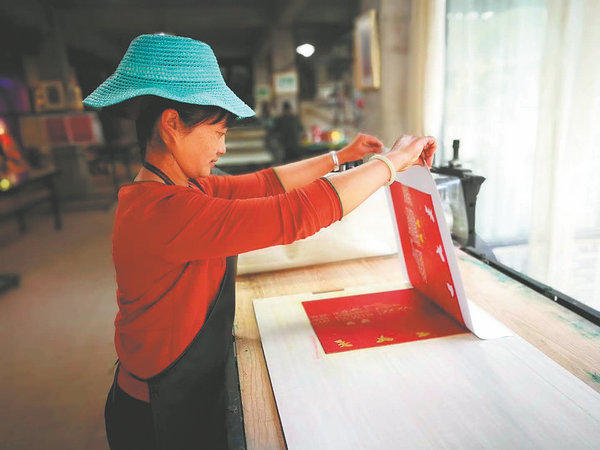

This dual action creates a textured color presentation and smooth color transitions, and because the boards are ultimately destroyed and discarded, the process is largely unpredictable and utterly irreversible. It is precisely this, including the continuous changes needed while carving and printing, that for Leng produces one of the most satisfying elements of his work: the feeling of serendipity.
Indeed, it may have been serendipity that was at work in 2015 when President Xi Jinping, attending a training session at the central Party school in Beijing, asked a local official of Ning'er county in Pu'er: "Is that road still open?"
He was referring to the ancient Tea Horse Road, a historic trade route that linked China's inland regions with Xizang, extending as far as West Asia and the Red Sea coast. Nestled within Ning'er county is the village of Nakeli, once a vital station along the Tea Horse Road and now home to Leng's reduction woodblock print studio.
"Nakeli and Pu'er are holy lands for artists to paint from life," Leng says. "There are many ethnic minority settlements where the most primitive characteristics of clothing, language and other ways of life thrive to this very day."